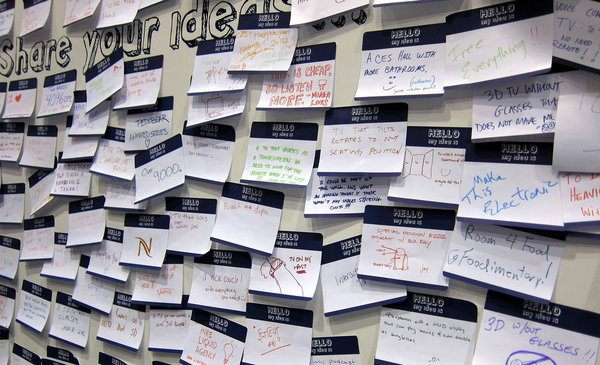An experiment conducted by behavioral scientists, discovered that problem solving procedures were inhibiting creative thought.
The traditional method begins with a detailed assessment of the current situation and clarification of specific problems. Researchers assessed the enthusiasm and effectiveness of problem solving groups by measuring room sound in decibels and counting the number of negative/positive adjectives used during discussions. They also rated the merit of proposed solutions. This experiment proved that when imagination is applied before rational thinking begins (by creating a vision of the preferred future) better decisions are made and participants become committed.
Activity #1, Imagine Success: Before trying to solve a problem, imagine and discuss what it would look like once your problem has been resolved. Talk as though success has already happened. What is different now? How are you feeling about the accomplishment?
During the second world war, an eminent social scientist Kert Lewin, was asked to help overcome the reluctance that soldiers had about eating powdered eggs. Lewin created a simple yet effective problem solving process called force field analysis. This useful tool identifies “what is” by recording contributors (forces that help move towards a goal) and resistors (forces working against movement towards a goal). He determined that the status quo exists because contributing and resisting forces are in balance. Add a contributor or remove a resistor and the current situation (status quo) will change.
Activity #2, Document what is: Record a summary of your imagined “preferred future.” Under your summary, draw a vertical line down the center of the page. Title this line “status quo”. Title the left half of the page “contributors.” Underline this heading with an arrow pointing towards the status quo. Title the right half “resistors” and underline with an arrow pointing towards the status quo. List forces that will help you move towards your goal in the contributor column and list what could hold you back under resistors. What emerges is a clear picture of your ideal, the current reality, and what needs to be done to close the gap.
Those of us who have tried to survive a rigid diet, have experienced the shoot yourself in the foot syndrome. It happens because we try to control behavior with contributors (i.e. rules, punishment, or incentives). The rebellious child residing in all of us, resents being “should on” and will eventually lash out. Lewin’s break through was in discovering that people can move towards a goal without risking an unpredictable backlash. The key success factor is to remove roadblocks or minimize their impact—rather than add contributors. When rules, rewards, or punishments are overdone, the rebellious child will resist and even sabotage their honorable intentions.
Activity #3, Eliminate the impact of resistors: To begin moving towards your goal, rank order resistors in terms of their negative impact. Eliminate the easy ones first, then develop an action plan for the rest.
And yes, Lewin resolved the Army’s powdered egg issue. He determined that the problem wasn’t taste or texture… the primary resistor was the soldiers’ thought of having to eat “processed” eggs. Lewin’s surprisingly effective solution was to have the manufacturer throw a few egg shells into the mix.
Contributed to Branding Strategy Insider by: Art McNeil, Managing Partner, Leadership Strategy Insider and best selling author of The “I” of the Hurricane.
The Blake Project Can Help: New Product Co-Creation Workshop
Branding Strategy Insider is a service of The Blake Project: A strategic brand consultancy specializing in Brand Research, Brand Strategy, Brand Growth and Brand Education




